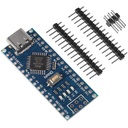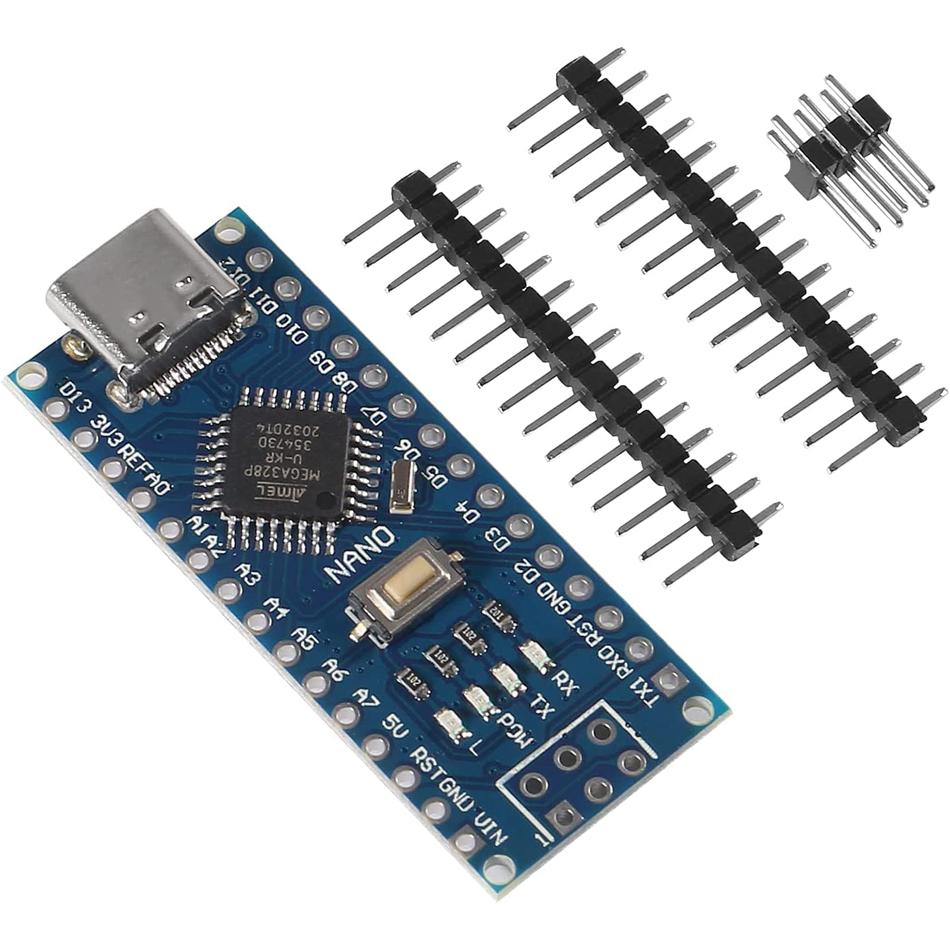Description
The Nano V3.0 Type-C Microcontroller Board is a compact, breadboard-friendly development board based on the ATmega328P microcontroller. It is an upgraded version of the classic Arduino Nano, featuring a USB Type-C connector and CH340G USB-to-serial chip, replacing the older FT232RL. The board offers flexible power options — it can be powered through USB, an external 5V regulated source, or an unregulated 7–12V DC input (including a 9V battery). With 14 digital I/O pins, 8 analog inputs, and multiple PWM outputs, the Nano V3.0 is ideal for DIY electronics, prototyping, robotics, and embedded control applications.
Key Features
- Upgraded USB Type-C Connector – Provides a modern, reversible connection.
- CH340G Interface Chip – Replaces FT232RL for reliable USB-to-serial communication.
- Flexible Power Supply Options – Supports USB power, 5V regulated input, or 7–12V unregulated DC input.
- ATmega328P-AU Microcontroller – The same MCU used in the Arduino Uno, offering full compatibility with Arduino IDE.
- Breadboard Friendly – Compact size and unsoldered headers for versatile prototyping.
- Automatic Power Selection – Automatically switches to the highest available power source.
- Full Arduino IDE Support – Compatible with Windows, macOS, and Linux systems.
Specification
- Microcontroller: ATmega328P-AU
- USB Interface Chip: CH340G (replaces FT232RL)
- Operating Voltage (Logic Level): 5V
- Input Voltage (Recommended): 7–12V DC (supports 5–12V external supply or 9V battery)
- Clock Speed: 16 MHz
- Digital I/O Pins: 14 (of which 6 provide PWM output: D3, D5, D6, D9, D10, D11)
- Analog Input Pins: 8 (A0–A7)
- Serial Communication: 1 pair of TTL-level RX/TX ports
- USB Connector: Type-C
- Supported Download Methods: USB and ISP
- Compatibility: Arduino Nano V3.0 standard footprint
- Operating Systems: Windows, macOS, Linux
- Dimensions (Package): 4.61 × 2.87 × 0.35 inches
- Weight: 0.317 oz (per board)
Application
- DIY electronics and prototyping
- Robotics and automation projects
- Embedded system development
- Educational and STEM learning
- Sensor integration and control systems



